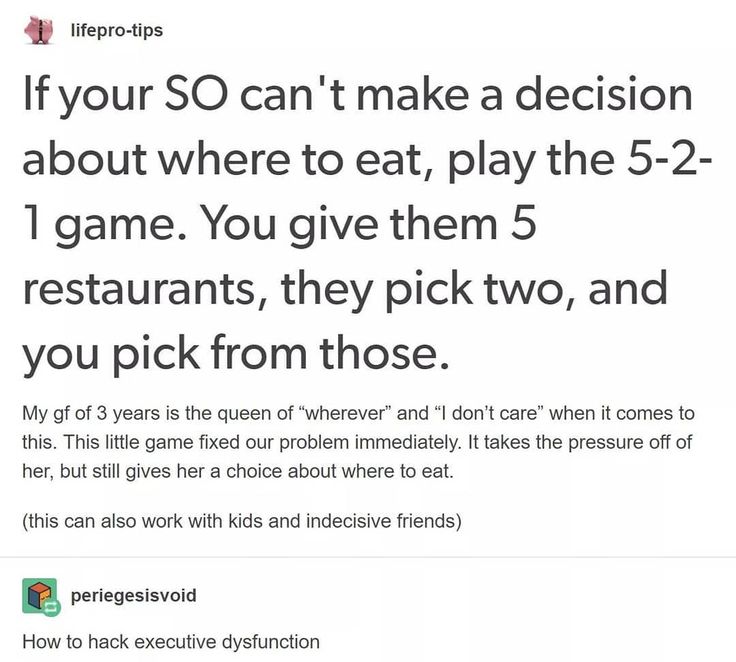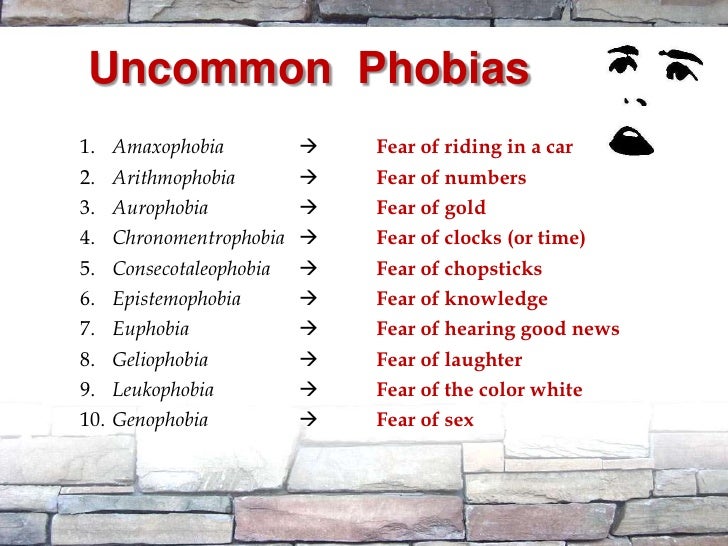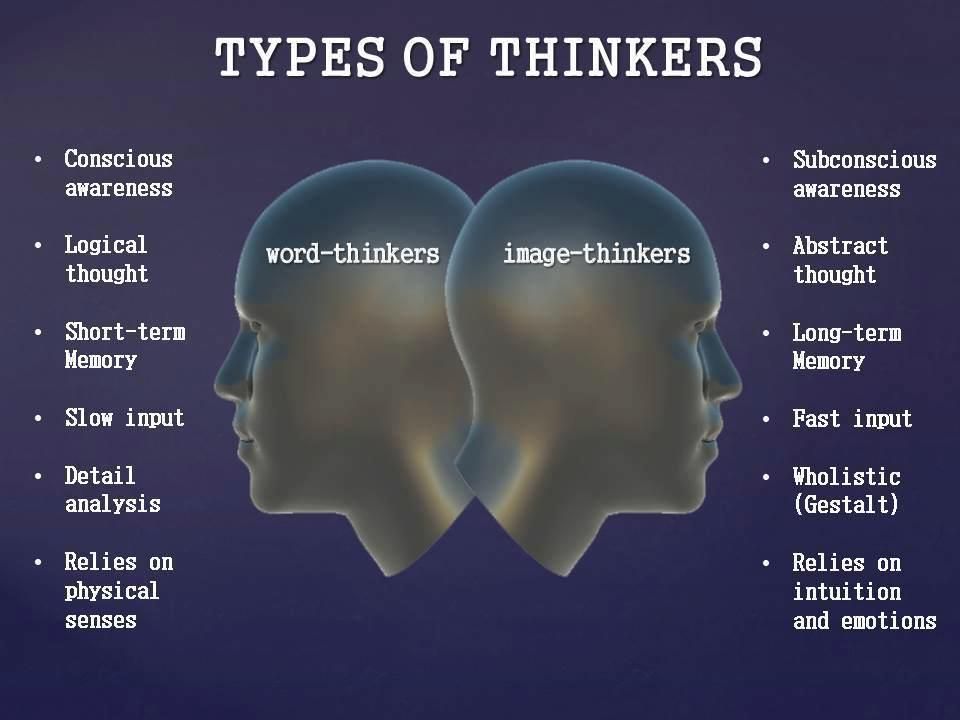How to stop executive dysfunction
A Guide to Executive Function Disorder in Adults
For Adults
Written By Allison Geller
Subscribe to our YouTube Channel
Transitioning from one activity to another can be tricky, even for adults. It can be especially challenging to shift from something enjoyable to something less desirable. Moving from one activity to another is one of many executive functioning skills we use to carry out daily activities.
Individuals with weak executive functioning skills may have problems completing common tasks, such as getting dressed, doing the laundry, packing a suitcase, or grocery shopping.
This article answers your questions about executive functioning, provides you with tips to improve your skills, and we offer you online on-one-on professional coaching. It’s never too late for an adult to develop stronger executive functioning skills!
What Does the Term Executive Function Mean?
12 Components of Executive Function
Why are Executive Functioning Skills Important?
The Role of Executive Function in the Modern World
Causes of Executive Function Disorder
7 Signs of Weak Executive Function Skills
How to Diagnose Executive Function
8 Useful Tools That You Can Start Using Today
Professional Help for Executive Functioning
What Does the Term Executive Function Mean?Executive function disorder is an umbrella term for a cluster of behavioral symptoms characterized by difficulties in self-regulation, planning, shifting focus, or managing time appropriately.
Executive function can help us plan, organize, make decisions, dynamically move between situations or thoughts, control our emotions and impulsivity, and learn from our past mistakes.
Executive function skills play a role in learning, work habits, and managing day-to-day activities. Conversely, individuals with weak executive functioning skills may have difficulty following directions, controlling emotions, or juggling multiple tasks.
Executive functioning develops shortly after birth. Development of skills continues during youth and adolescence. A window of drastic growth of executive functioning skills occurs between the ages of 3-5 years old, and improvement of skills generally continues through adulthood. As we age, a decline in executive function skills occurs.
12 Components of Executive FunctionExecutive functioning skills play an important role in many areas of life. Some things that you do every day that require these skills include:
- Planning and Prioritizing
The process of making decisions or taking steps needed to reach a goal.

- Time Management
The skill that allows a person to exercise conscious control over the amount of time spent on specific activities, especially to increase effectiveness, efficiency, or productivity.
- Organization
The deliberate, systematic arrangement of ideas. It is the ability to create order on work and play.
- Working Memory
A cognitive ability that allows an individual to hold information in the mind while using it to complete a task.
- Self-Monitoring and Metacognition
The ability to monitor one’s own learning and performance or keeping track of one’s abilities and comparing it to peers.
- Response Inhibition and Impulse Control
The ability to control behavior that may be undesirable.
- Emotional Control
The ability to identify, understand, and manage one’s own emotions and change and adapt emotional states as needed to complete tasks.

- Task Initiation
The ability to start a task because a person is organized and able to focus on others during interactions.
- Flexibility
The ability to adapt to new situations when necessary. Being flexible allows an individual to create a new approach when a particular plan becomes unsuccessful.
- Goal-Directed Persistence
When a person focuses on their goals and follows through to achieve the desired results.
- Sustained and Disengaging Attention
Sustained attention is attending to and focusing on a specific task. The ability to sustain attention helps to reduce distractions. Disengaging attention is the ability to withdraw attention from one stimulus to focus on another.
- Regulation of Processing Speed
Processing speed refers to the time required to respond to or process information in an individual’s environment.
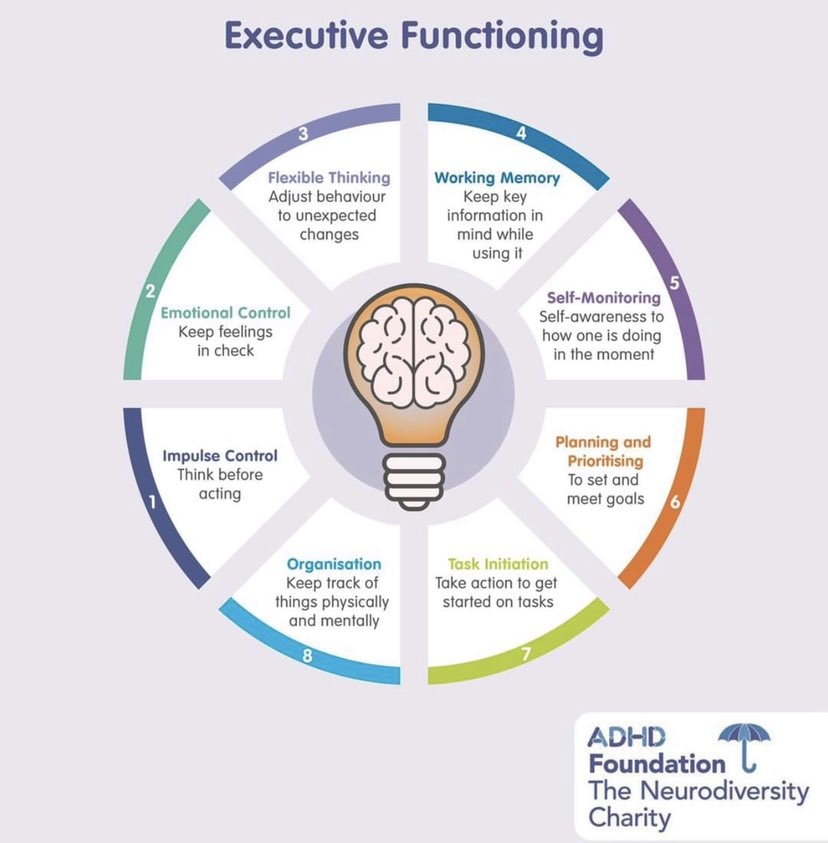 Regulation of processing speed is when a person can consciously decide how slowly or quickly to perform a task. A person can consciously make this decision based on its value and importance.
Regulation of processing speed is when a person can consciously decide how slowly or quickly to perform a task. A person can consciously make this decision based on its value and importance.
Executive functioning skills allow individuals to prioritize tasks and correctly sequence needed behaviors to complete them efficiently. Skills like planning and organizing are crucial to success at work, school, and in daily life. At every stage of development, these skills are necessary to manage our home and thrive in our careers.
An Example of Executive Function Skills in a Preschool-Age Child
The child must use executive function skills to complete the seemingly simple task of building a block tower. First, the child must take out the blocks that they would like to use. Then they might sort through the blocks to find the best ones to use as a base. Next, they must continue to find empty spots to place new blocks, and they even may need to negotiate and collaborate with their peers for space or to use the blocks they need. To complete the tower, they must have a plan and execute it from start to finish.
Next, they must continue to find empty spots to place new blocks, and they even may need to negotiate and collaborate with their peers for space or to use the blocks they need. To complete the tower, they must have a plan and execute it from start to finish.
An Example of Executive Function Skills in a College Student
A college student has a professor that communicates with his class about upcoming assignments and exams using an app. The professor asks his students to submit assignments using a different web-based platform. The student has a different professor who wants to use a completely different online platform for submitting assignments and sends out a weekly Zoom invitation to connect for weekly web-based classes. In this situation, the student must rely on the professor’s organizational skills and familiarity with technology. The student must also have very strong organizational and planning skills to be successful in their classes.
An Example of Executive Function Skills in an Adult Professional
The adult will be asked to use executive functioning skills to lead a team involved in planning and developing a new section of a city. The person will be required to determine the sites for the new buildings and roads, consider emergency and evacuation plans, and collaborate with professionals from various disciplines who will each do their part. The leader will plan, organize, make decisions to take the project from an idea to a plan to action and ultimately to the point of completion. Without strong executive functioning skills, the plan is not likely to come to fruition.
The person will be required to determine the sites for the new buildings and roads, consider emergency and evacuation plans, and collaborate with professionals from various disciplines who will each do their part. The leader will plan, organize, make decisions to take the project from an idea to a plan to action and ultimately to the point of completion. Without strong executive functioning skills, the plan is not likely to come to fruition.
We used to live a simpler life. Today, our brains are taxed to the limit, and we are met with a constant barrage of decision-making. We make decisions at work, about our homes, and how we will conduct our lives.
If we are parents, we are constantly planning and organizing to make sure our children’s needs are met. We continuously communicate via email, and text and stay in touch through social media outlets.
The rates of depression and anxiety are soaring.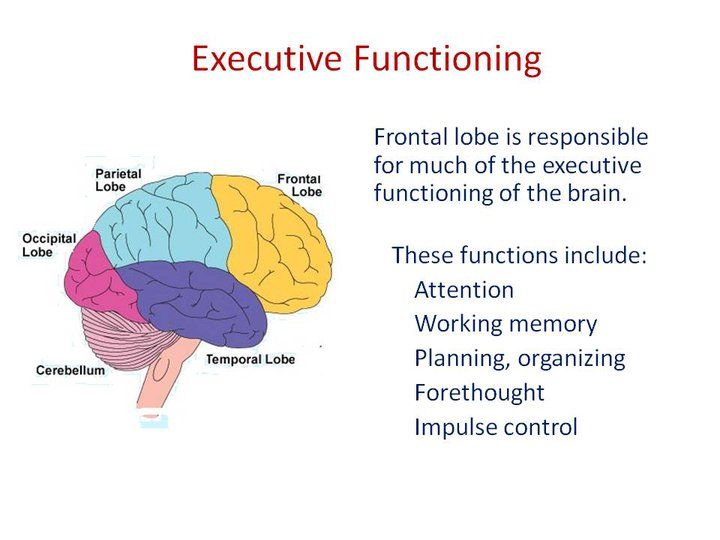 It is possible that all of the demands that we put on ourselves are contributing to the skyrocketing numbers. To overcome executive function issues, it is essential to recognize its symptoms and learn how to prevent them.
It is possible that all of the demands that we put on ourselves are contributing to the skyrocketing numbers. To overcome executive function issues, it is essential to recognize its symptoms and learn how to prevent them.
Some conditions that may contribute to a person having symptoms of EFD include:
Autism Spectrum Disorder (ASD)
ADHD
Anxiety
Depression
Brain Injury (e.g., Stroke, TBI)
Chronic Pain
Alzheimer’s Disease
Learning Disabilities
Cognitive Disorders
Executive function disorder may also be associated with Bipolar Disorder and Obsessive Compulsive Disorder (OCD). Some factors can temporarily lead to executive function issues, including alcohol and drug abuse, sleep deprivation, severe pain, exhaustion, and stress. Executive function skills tend to be weakest in older adults, but it is also becoming a more common problem in younger adults.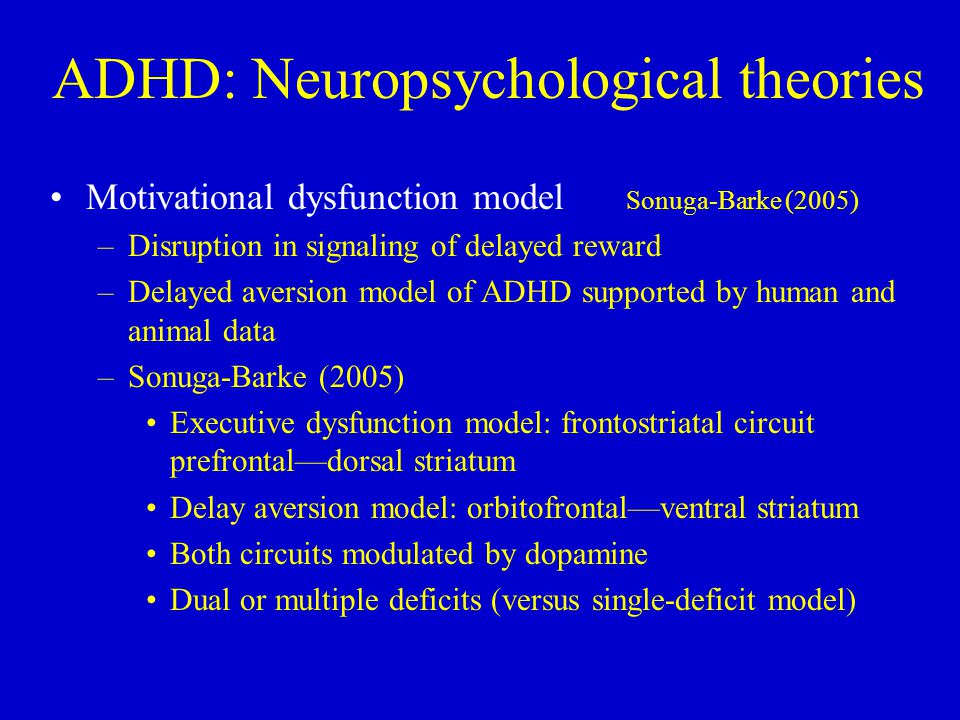
Some people are born with weak executive function skills, but those with ADHD, depression, anxiety and autism spectrum disorder (ASD) are at higher risk. Identifying executive function disorder symptoms as early as possible is essential to obtaining the treatment available. Some of the signs of EFD are as follows:
- Weakness in Planning and Prioritizing
People with weak planning and prioritizing skills may not know how to start planning a project. They may be easily overwhelmed trying to break tasks into smaller, more manageable parts, and they may have trouble seeing the big picture.
This can be frustrating for the person with poor planning skills and the colleagues and family members who rely on them to meet deadlines and maintain productivity.
- Time Management Difficulties
Allocating time for completing tasks, such as planning out a week of meals or determining how long it will take to complete a project at work, can be a problem for individuals with weak executive function skills.
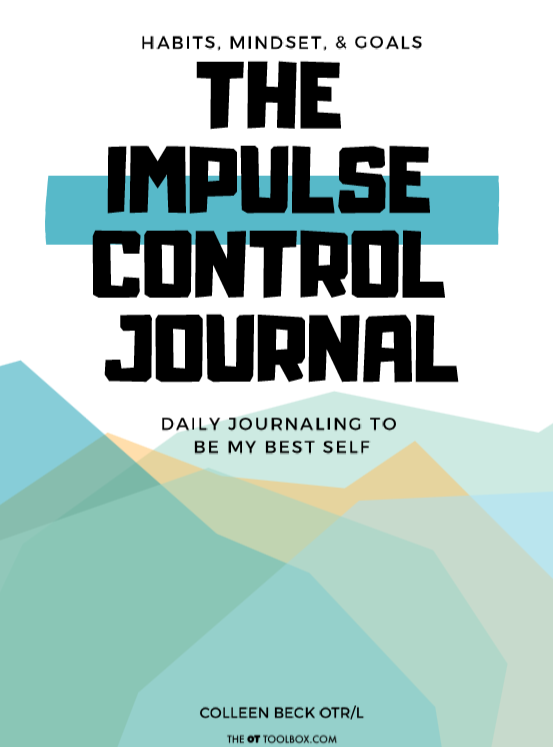
- Poor Organizational Skills
People who have weak organizational skills may be considered scattered. They may have poor ability to follow directions and listen. Workspaces may become too cluttered, making it difficult to accomplish tasks. Misplacing and losing possessions, paperwork, etc., occurs often.
- Trouble With Flexible Thinking
Some individuals do not learn how to use flexible thinking intuitively. Others must be taught these core concepts more explicitly.
Those with trouble being flexible may be rule-bound and rigid in their thinking. They may not be willing to negotiate with other people. They tend to be poor problem solvers and will repeatedly try the same solution that isn’t working. A person with reduced flexibility may have a hard time switching plans once they have been set.
- Working Memory Problems
This is one of the main areas of executive function.
 Working memory involves storing information, remembering lists of items and instructions, and solving problems quickly.
Working memory involves storing information, remembering lists of items and instructions, and solving problems quickly. Individuals with working memory problems may find it hard to manage finances, recall and follow both simple and complex directions (i.e., following a recipe), or remember a list of items they are supposed to purchase at the store.
- Poor Emotional Control and Impulsivity
Individuals with poor emotional control may have trouble adapting efficiently to different situations. They may have difficulty self-monitoring their behavior and emotions.
- Trouble with Multi-Tasking
Multi-tasking is a skill that requires an individual to quickly shift their attention and focus from one thing to the next, perform two or more tasks simultaneously, or perform several tasks in rapid succession.
While some people can manage multiple tasks effectively, others have a hard time focusing on one task for more than a few minutes at a time.
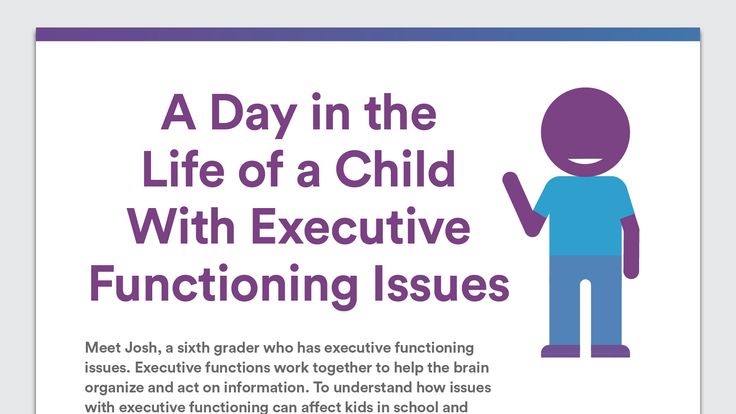 A deficit in this area can make life challenging.
A deficit in this area can make life challenging.
Executive function may be diagnosed informally or through a more formal process, including standardized testing. The gold standard for evaluating executive function is through a neuropsychologist.
Children can often get tested through the school system if they are not meeting the academic standards set up by the school system. In addition to diagnosing executive function, a neuropsychologist can rule out other conditions such as ADHD and learning disabilities as contributing factors.
Speech-language pathologists can also provide an evaluation of executive function. An evaluation will consist of clinical observation, clinical intake, an executive function inventory and can also include executive function formal testing. Speech pathologists typically factor in input from the individual’s neuropsychologist, psychologist, social worker, or school counselor.
Book a Free Consultation
8 Useful Tools That You Can Start Using Today- Make a Daily To-Do List
Creating a daily list of tasks and projects can help to improve the challenges of executive function disorder. To-do lists can help you stay motivated, organized, and make progress towards your goals. A daily to-do list is a powerful way to manage impulses that can lead to poor decision-making.
- Use a Calendar
Create a daily, weekly, or monthly schedule to track important dates and appointments. Update your calendar daily. Try to make recurring appointments at the same time of day.
- Learn How to Manage Your Time
Break down to-do lists as "urgent," "important," and "non-urgent." This will allow you to budget plenty of time for those long-term projects that are important to you.

- Take Notes
Take time to write down important dates, reminders, or rules that come up in a designated notebook. Keep it organized. Keep sticky notes in a place that is easily accessible. Take notes related to important calls so that you can keep track of details discussed in meetings and conversations.
- Use Reminders
Use reminders and alarms to keep you organized and on time for appointments and meetings.
- Keep It Simple
Reduce the number of activities that you attempt to complete at one time to help you focus and complete the task before moving on to another.
- Relax and Breathe
Practicing stress management techniques like meditation, yoga, deep breathing can improve symptoms associated with weak executive function skills and can help to reduce executive function anxiety.
- Stay Organized
If you find yourself losing items frequently or feeling overwhelmed, try decluttering your home or office.
 Stay organized and keep your area tidy to help you locate items and feel less overwhelmed.
Stay organized and keep your area tidy to help you locate items and feel less overwhelmed.
If you want to go beyond implementing simple strategies independently, you may want to consider working with a professional.
A speech-language pathologist is the ideal professional to deliver executive function coaching for adults. Speech pathologists are trained to help individuals develop language skills and assist with the social language aspects of executive function, such as initiating interactions, topic maintenance, and ending/wrapping up a conversation.
At Connected Speech Pathology, our speech-language pathologists provide direct, one-on-one coaching to address the concerns you may have. We can teach adults and children how to manage multiple activities, including business projects, preparing for presentations, or even homework, all while still finding some downtime.
There are two primary approaches that we can use for building and restoring executive function skills: Environmental and Individual.
Environmental ApproachAn environmental approach considers manipulating your surroundings to build executive function skills.
These foundational skills may involve things like:
creating a healthy, stable environment at home and in the workplace
getting adequate sleep
reducing anxiety
increasing relaxation time
maintaining a healthy diet
exercising
By focusing on real-life daily situations, the individual intervention approach strengthens executive function skills by teaching individuals how to adapt to changes and demanding situations.
A speech-language pathologist can help determine the appropriate ways to target executive functions for each person's unique situation.
Speech therapy for executive function may target how to:
Executive functioning coaching may also include using positive self-talk and reframing a state of mind or situation; and behavioral techniques such as relaxation breathing.
Not all speech-language pathologists are trained to help individuals with executive function challenges. At Connected Speech Pathology, our speech pathologists have training in this area, and our services are provided remotely in the comfort of your home.
Start by scheduling a free phone consultation!
Get Started
About the Author
Allison Geller is a speech-language pathologist (SLP) and the owner of Connected Speech Pathology. She obtained her Bachelor’s and Master’s degrees from the University of Florida in Speech-Language Pathology. Allison has practiced speech therapy in a number of settings including telepractice, acute care, outpatient rehabilitation, and private practice. She has worked extensively with individuals across the lifespan including toddlers, preschoolers, school-aged children, and adults. She specializes in the evaluation, diagnosis, and treatment of a variety of communication disorders including receptive/expressive language disorders, articulation disorders, voice disorders, fluency disorders, brain injury, and swallowing disorders.
She has worked extensively with individuals across the lifespan including toddlers, preschoolers, school-aged children, and adults. She specializes in the evaluation, diagnosis, and treatment of a variety of communication disorders including receptive/expressive language disorders, articulation disorders, voice disorders, fluency disorders, brain injury, and swallowing disorders.
Allison served as the clinical coordinator of research in aphasia in the Neurological Institute at Columbia University Medical Center in New York. She is on the Board of Directors for the Corporate Speech Pathology Network (CORSPAN), a Lee Silverman Voice Treatment (LSVT) certified clinician, and a proud Family Empowerment Scholarship/Step-Up For Students provider. Allison is passionate about delivering high quality-effective treatment remotely because it’s convenient and easy to access. What sets us apart from other online speech therapy options is—Allison takes great care to hire the very best SLPs from all over the country.
Learn More In A Free Call
If you have any questions or would like to work with one of our speech therapists to see how we can help strengthen your executive functioning skills, get started with a Free Consultation.
Self HelpExecutive Function
Allison Geller https://www.connectedspeechpathology.com
Executive Function Disorder & Executive Functioning Skills
Written by Brenda Goodman, MA
What Is Executive Function?
Executive functioning skills help you get things done. These skills are controlled by an area of the brain called the frontal lobe.
Executive function helps you:
- Manage time
- Pay attention
- Switch focus
- Plan and organize
- Remember details
- Avoid saying or doing the wrong thing
- Do things based on your experience
- Multitask
When executive function isn’t working as it should, your behavior is less controlled.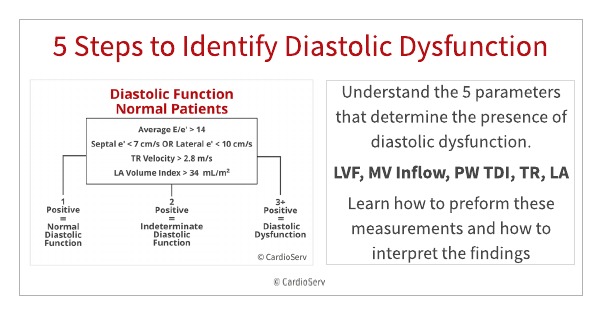 This can affect your ability to:
This can affect your ability to:
- Work or go to school
- Do things independently
- Maintain relationships
Types of Executive Function
Executive function can be divided into two groups:
- Organization: Gathering information and structuring it for evaluation
- Regulation: Taking stock of your surroundings and changing behavior in response to it
For example, seeing a piece of chocolate cake on a dessert cart at a restaurant may be tempting. That's where executive function can step in. The organizational part reminds you that the slice is likely to have hundreds of calories. Regulation tells you that eating the cake conflicts with goals you may have, like eating less sugar or losing weight.
What Is Executive Function Disorder (Executive Dysfunction)?
Many ADHD symptoms are problems with executive function. ADHD is a condition that your doctor can diagnose, and while you may hear them use the term executive function disorder, it isn’t a true medical condition. It’s a weakness in your brain’s self-management system, particularly skills that help you:
It’s a weakness in your brain’s self-management system, particularly skills that help you:
- Pay attention
- Remember things
- Organize tasks
- Manage time
- Think creatively
What Causes Executive Function Problems?
Some people are born with weak executive function. People with ADHD, depression, or learning disabilities often have problems with these skills. An injury to the front of the brain can harm your ability to stay on task. Damage from Alzheimer's disease or strokes may also cause problems.
Experts rely on different tests to measure specific skills related to executive function. Problems seen on these tests can't predict how well adults or children will do in real life. Sometimes, watching them and trying different things are better ways to improve weak executive function.
How Do I Know if My Child Has Problems With Executive Function?
Warning signs that a child may have problems with executive function include problems with:
- Planning projects
- Estimating how much time a project will take to complete
- Telling stories (verbally or in writing)
- Memorizing
- Starting activities or tasks
- Shifting plans when situations change
- Focusing only on one task
- Shutting down when parents or peers don’t act as expected
How Are Executive Function Problems Diagnosed?
Because executive function problems aren’t recognized as an official illness, there isn’t a set of criteria you can use to diagnose someone.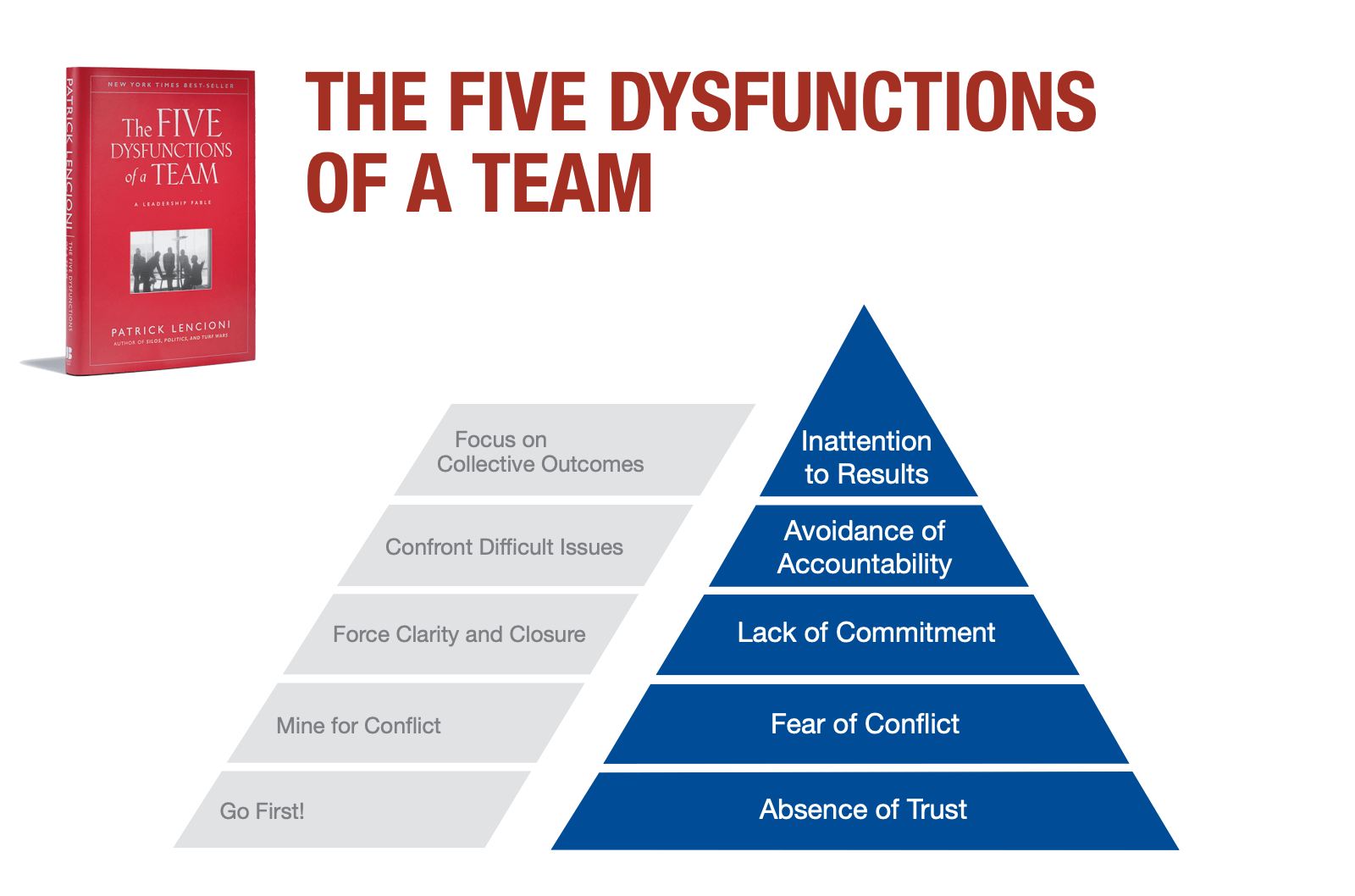 But there are tests to gauge how well your executive function works. These include:
But there are tests to gauge how well your executive function works. These include:
- Barkley Deficits in Executive Functioning Scale (BDEFS): This tool helps screen for problems with executive function tasks like organization, self-restraint, motivation, emotional control, and time management. It can provide information on how the person acts over a period of time, too, as opposed to other tests, which only provide in-the-moment information.
- Comprehensive Executive Function Inventory (CEFI): This scale measures executive function strengths and weaknesses in kids from 5 to 18. Parents, teachers, and kids ages 12-18 can take part in the evaluation
- Conners 3-Parent Rating Scale: This measures behavior in kids ages 6-18. It helps identify learning problems in specific subjects, like reading, spelling, math and also in terms of broader concepts like memory. Parents, teachers, and kids themselves can contribute.
Checklist: Common Executive Function Challenges -- and Solutions
How to Manage Executive Function Problems
Here are some tips from the National Center for Learning Disabilities:
- Take a step-by-step approach to work.

- Rely on visual aids to get organized.
- Use tools like time organizers, computers, or watches with alarms.
- Make schedules, and look at them several times a day.
- Ask for written and oral instructions whenever possible.
- Plan for transition times and shifts in activities.
To improve time management:
- Create checklists, and estimate how long each task will take.
- Break long assignments into chunks, and assign time frames for completing each one.
- Use calendars to keep track of long-term assignments, due dates, chores, and activities.
- Write the due date on the top of each assignment.
To better manage space and keep things from getting lost:
- Have separate work areas with complete sets of supplies for different activities.
- Organize the workspace.
- Cut clutter.
- Schedule a weekly time to clean and organize the workspace.
To improve work habits:
- Make a checklist for getting through assignments.
 For example, a student's checklist could include such items as: get out pencil and paper; put name on paper; put due date on paper; read directions; etc.
For example, a student's checklist could include such items as: get out pencil and paper; put name on paper; put due date on paper; read directions; etc. - Meet with a teacher or supervisor on a regular basis to review work and troubleshoot problems.
- There are also executive function coaches or tutors who can help you sharpen the way you plan and carry out tasks.
Autistic self-help №4. Executive Dysfunction: Domestic Chaos
Together with Diana, an autistic psychologist and foundation author, we are releasing autistic self-help , a column that autistic authors write for autistic readers. In previous articles, we discussed what to do if you suspect autism in yourself or loved ones, and also talked about sensory overload, myths around psychiatry and alexithymia.
What is executive dysfunction?
Autistic psychologists Diana and Mila, artist Yulia and writer Nastya are talking. Illustrations by Sergey Tisnek, student of the Anton is Right Here Foundation.
Executive dysfunction
Sometimes it is more difficult for autistic people to perform tasks familiar to many: cleaning, washing dishes, planning the day, and others. This is not due to laziness, but to a violation of the effectiveness of executive functions. Working memory, inhibitory control, and cognitive flexibility are the 3 main elements of executive functions.
Working memory is the ability to keep information in mind and work with it. Inhibitory control is the ability to control impulses and behavior, resist temptation, and resist spontaneous response. Cognitive flexibility is the ability to adapt to change.
Together they help us plan, focus and multitask. If there are difficulties with them, then we can talk about executive dysfunction - its severity also varies. Even in one person, it can manifest itself more strongly if the brain experiences overload.
“ Me and my daughter are autistic. We both have difficulty with daily activities that require a certain sequence of actions. This is especially noticeable in a state of fatigue, tension or strong emotions » .
This is especially noticeable in a state of fatigue, tension or strong emotions » .
Mila, autistic psychologist
It is important to remember that executive dysfunction is not laziness or lack of motivation. It's just another job of the brain. When you are focused on work or reading an interesting book, you may not notice what is happening around you. Here is the same situation. With this dysfunction, the brain has difficulty trying to chase two birds with one stone and quickly switch between different tasks. Often, it is not easy for others to understand why a person can do something uber-complicated without any special effort, and with such “simple” things as washing dishes, he has difficulties.
« It's a shame to admit that everyday affairs are in complete chaos, but sometimes dirty dishes stand for a week, or there is so much dust on the floor that it gathers in balls. Sometimes I follow this, but then I get distracted by something (study, work) and that's it - a terrible mess at home.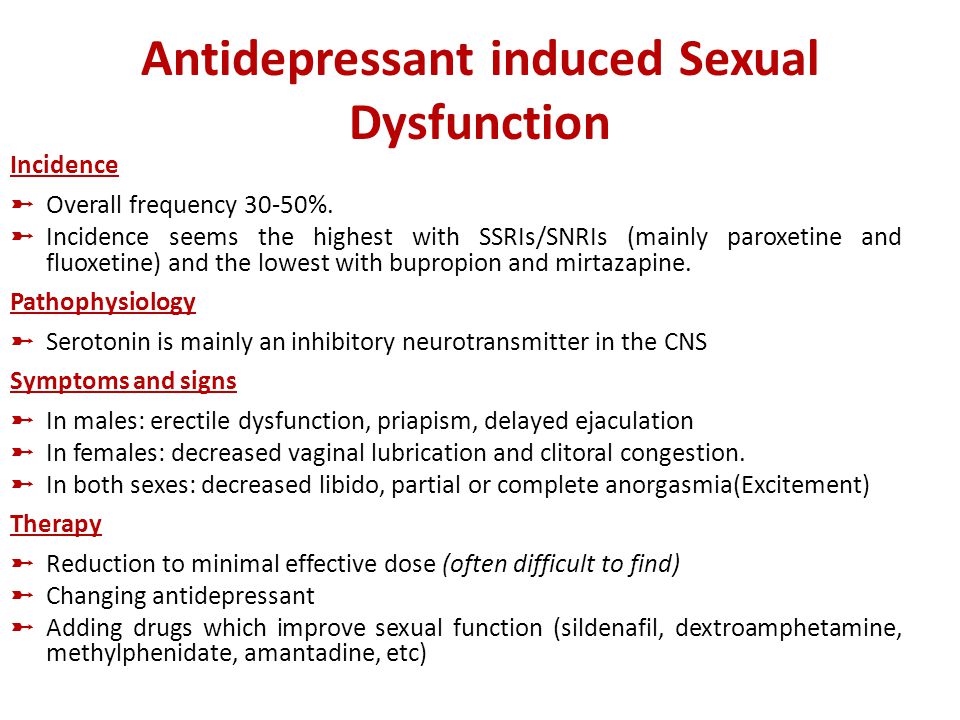 I forget to take things out of the washer and find them there after a couple of days » .
I forget to take things out of the washer and find them there after a couple of days » .
Julia, autistic artist
From the outside, it may seem that an autistic person simply does not want to clean up or prefers chaos reigned in the house, but in reality it is simply very difficult for us to see that the environment is already quite dirty. I can’t see that it’s time to clean up the table until I specifically switch my attention to it. Well, or until the next attempt to fit something on the table, the objects do not fall on the floor.
“ I don’t notice the mess and generally forget about this aspect of life, and then bam, and there is nothing, all the dishes are dirty, and I don’t understand how this happened at all ” .
Julia, autistic artist
Essential Brief:
Working memory, inhibitory control and cognitive flexibility are the 3 main elements of executive function.When problems arise with them, we can talk about executive dysfunction.
Executive dysfunction is not laziness or lack of motivation. It's just another job of the brain.
Features of thinking
Neurotypical people take it for granted that they can do things with ease and without thinking. However, for an autistic person, all these processes look a little different.
If a typical person can do the cleaning in half an hour, then I need to spend 6 hours on it. This is because the autistic person needs a more detailed internal monologue (or other mental image) in order to focus and get things done from start to finish. I will go to every thing on the table and think about what to do with it and where to put it. And it is always quite difficult to explain this moment to others. Everyone in response objects that they also think about it and do not understand what is such a difference. And the difference is that they look at the pencil and think: “Oh, the pencil, I need to put it in the pencil!”
And my thought process looks like this: “So, this is a pencil. Why is it here and is it still needed? To do this, you need to remember what I did to them. Have I finished that job? Yes, it means that it is no longer needed and you can remove it. So where did I get it from? From a pencil. How she looks like? Like a blue glass. And where he? On the other side of the table. So, now it will be necessary to take a pencil, go to another part of the table, put the pencil in the blue pencil box. And so you need to do with each item. That's why, by the way, I don't really like inviting guests. Before they arrive, it is customary to clean up, which means I need to spend a lot of time preparing.
Why is it here and is it still needed? To do this, you need to remember what I did to them. Have I finished that job? Yes, it means that it is no longer needed and you can remove it. So where did I get it from? From a pencil. How she looks like? Like a blue glass. And where he? On the other side of the table. So, now it will be necessary to take a pencil, go to another part of the table, put the pencil in the blue pencil box. And so you need to do with each item. That's why, by the way, I don't really like inviting guests. Before they arrive, it is customary to clean up, which means I need to spend a lot of time preparing.
The duration of daily activities is one of the big problems of executive dysfunction. Sometimes such a duration can be at the expense of something else. Here, a certain everyday thing comes to the fore, diverting attention from all other activities. Often, autistic people can clean for several days in a row, which also surprises neurotypical people for some reason. Sometimes, for example, it is difficult to know when to stop. When can a plate be considered clean? And when is the kitchen already completely cleaned? Starting to dust off the bookshelf, I go into such detail that after half an hour you can find myself wiping every pencil I have with a damp cloth.
Sometimes, for example, it is difficult to know when to stop. When can a plate be considered clean? And when is the kitchen already completely cleaned? Starting to dust off the bookshelf, I go into such detail that after half an hour you can find myself wiping every pencil I have with a damp cloth.
« Cleaning is a lengthy process, it can take all day or three days. At the same time, I forget about everything else and just clean up, plan everything, buy cleaning products and methodically clean everything » .
Julia, autistic artist
The worst thing you can do: start reproaching a person with executive dysfunction for laziness and indifference. Quite often, autistic people themselves make such reproaches to themselves. However, this is fundamentally wrong. Because a lazy person does not want to do something , but a person with executive dysfunction cannot.
IMPORTANT BRIEFS:
In order to focus and get things done from start to finish, an autistic person needs a more detailed internal monologue.
The duration of daily activities is one of the big problems of executive dysfunction.
A lazy person does not want to do something, but a person with executive dysfunction cannot.
Self-help tip #8: Detailed plan
As we discussed above, autistic people require much more specific instructions. So from now on, the glider is your new best friend.
« Helps me to go through or mentally imagine upcoming actions, what I will do for what; then dictate to yourself the steps in the process, marking each step taken. This helps a lot to keep the rhythm and not fall into a stupor » .
Mila, autistic psychologist
Agree, the planned "wash the kitchen" is very abstract. To really do something, it is necessary to prescribe a clear course of action. In our case, "wash the kitchen" includes several consecutive items:
- wash dishes;
- wash the sink;
- wipe dust;
- put away on the table;
- wipe the table.
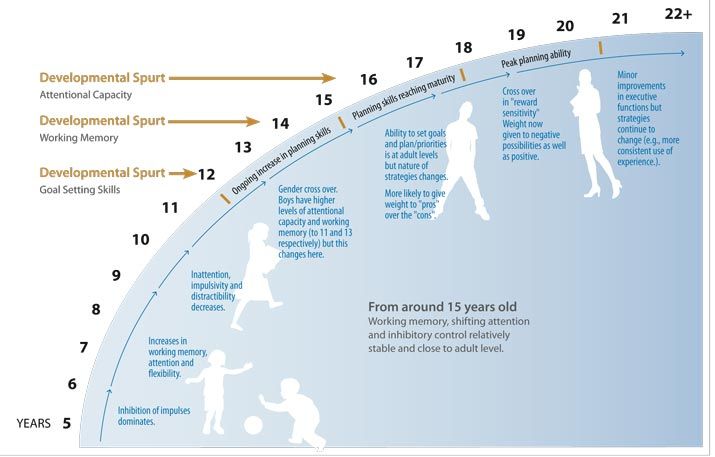
And now each item must be explained to yourself in more detail. For example, to wipe dust, you need to understand what tools you will need (rag and water) and what surfaces you will need to wipe (stove, shelves). It is necessary to imagine a clear sequence of actions, for example, take a rag from the battery, wet it in the sink, go to the stove, wipe the stove from the top, front, side, go to the sink, wash the rag and put it back on the battery. As you guessed, there will be many points in such plans. It is not always necessary to prescribe everything right down to the smallest detail, but it will be great to work out some kind of sequence of necessary actions. And having something similar at hand, next time it will be easier for you to go through this list again. It remains to determine the regularity of such actions. For example, set yourself a reminder for Sunday every two weeks.
“It's easier for me if there is some kind of permanent plan. Here I am first dusting, then washing the floor, then my bathroom. If I do something in a different sequence, it's ... strange to me. In short, I always clean the same way, so there are no problems with this” .
If I do something in a different sequence, it's ... strange to me. In short, I always clean the same way, so there are no problems with this” .
Nastya, autistic writer
It is worth developing several plans for different situations. If you have a lot of time and you need to do a general cleaning, then here you need a big plan with cleaning many places. However, if a friend is going to visit you in the evening, then you need to have a trap plan for a mini-cleaning. Without such a plan, I can start paying attention to the little things, like wiping every book in the kitchen with a damp cloth, and end up not doing something bigger and more noticeable, like cleaning the floor. For such cases, it is necessary to allocate a pool of the most significant things and stick to this plan, even if you notice that your books have also become dusty.
“The distribution of efforts helps me - before doing things, determine the necessary minimum and start from there, the rest depends on the situation. For example, going to the store. If there are a lot of people in the store and I’m covered, I buy according to the minimum list and leave, if everything is in order, according to the full list” .
For example, going to the store. If there are a lot of people in the store and I’m covered, I buy according to the minimum list and leave, if everything is in order, according to the full list” .
Mila, autistic psychologist
I've talked a lot about cleaning here, because it's the easiest to explain, and because it's really a very big challenge for many autistic people. But in general, the same applies to some fees (for example, on a trip), hygiene procedures (do you even know what a complicated sequence is in taking a shower?) or cooking (thanks to the Internet with detailed instructions for cooking buckwheat). When I get ready for work, I have a certain sequence of what I need to put in my bag with me.
Important Brief:
Autistic people require much more specific instructions.It is necessary to imagine a clear sequence of actions and prescribe it to yourself as a plan.
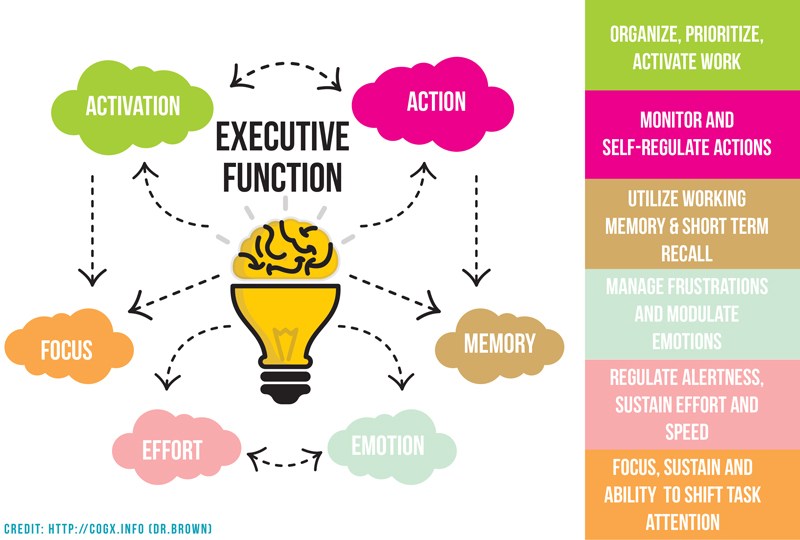
It is worth developing several plans for different situations.
Self-help tip #9: Organize your space
Different tasks require different plans. When I try to move from one area of activity to another (for example, after a break to go to work), I have difficulty understanding what I need to do and where to start.
In such cases, special spaces allocated for certain tasks help. For example, for work, I have a table with a work diary, calendar, stationery, and notes reminding me of what needs to be done. In the bathroom, I have personal care items laid out. They are arranged in a certain sequence, which helps you remember to do everything you need to do. It is important to remove all foreign objects from such spaces so that they do not interfere with you.
We get a kind of spatial clue that reminds us what to do. Coming to such places, it becomes easier to switch and not be distracted by other things. For example, when I sit down at the table, I understand that I need to work, and I can focus better. Of course, you must not forget to create space for relaxation.
Of course, you must not forget to create space for relaxation.
It's hard for me to remember things in my house when I can't see them. Therefore, in spatial clues, everything is in front of the face. However, when there is no way to fit everything, I use stickers. In the evening, I put a sticker on my laptop with a reminder that I have some kind of food that I can have for breakfast. And on the working papers, the same stickers are pasted, on which it is written exactly what actions will need to be done with them.
Important in brief:
To switch between tasks, special spaces allocated for certain tasks help.It is important to remove all foreign objects from such spaces, and the necessary objects can be arranged in a certain sequence, which will help you not to forget, to do everything you need.
It's also useful to use stickers to remind yourself of things you don't have at hand.
What about self-stimulating behavior? | Autistic City
In addition to socialization, the most common topic when discussing autism is self-stimulating behavior or 'stimulation'. For those who don't know, stimming refers to clearly non-functional, repetitive movements. This is a rather vague definition, so I will give some examples of what is referred to as stimming. "Stims" can include motions such as rocking back and forth, twisting your fingers and pulling your hair, rocking from side to side, circling in one place, walking quickly back and forth, shaking your hands, or scratching your skin. By the way, breathing or blinking are also repetitive movements, but since they serve a specific and explicit purpose, they are not classified as stimming. The term stimming is also used to refer to behaviors that resemble obsessive-compulsive disorder, such as arranging objects in straight lines. The reason for this behavior is different, but it is still called stimming, despite the different reasons.
For those who don't know, stimming refers to clearly non-functional, repetitive movements. This is a rather vague definition, so I will give some examples of what is referred to as stimming. "Stims" can include motions such as rocking back and forth, twisting your fingers and pulling your hair, rocking from side to side, circling in one place, walking quickly back and forth, shaking your hands, or scratching your skin. By the way, breathing or blinking are also repetitive movements, but since they serve a specific and explicit purpose, they are not classified as stimming. The term stimming is also used to refer to behaviors that resemble obsessive-compulsive disorder, such as arranging objects in straight lines. The reason for this behavior is different, but it is still called stimming, despite the different reasons.
All people stim from time to time. For example, when people are bored, they may start tapping their fingers on the table, playing with their hair, or twiddling their thumbs. The difference between normal stimming and autism stimming is only a matter of degree and frequency. While any normal person may have the habit of tapping their fingers from time to time, an autistic person will jump and spin around the room (which is much more conspicuous), and they will also do it much more often. The question is why does he do it? The best explanation is that stimming is the body's way of understanding how to perceive everything around.
The difference between normal stimming and autism stimming is only a matter of degree and frequency. While any normal person may have the habit of tapping their fingers from time to time, an autistic person will jump and spin around the room (which is much more conspicuous), and they will also do it much more often. The question is why does he do it? The best explanation is that stimming is the body's way of understanding how to perceive everything around.
Sensory feedback
When we are first born, we do not perceive sensory signals. For example, a small child who is just learning to walk has the muscle strength to walk upright, but when he gets up, he immediately falls down. This is because he has not yet figured out his own feelings. He doesn't know that a certain amount of pressure in his heels means he's falling backwards, or that pressure in his toes means he's falling forward. He has not yet developed the skills to receive sensory feedback. In order to develop sensory feedback (and thus better control of their body), a young child needs as much sensory stimulation as possible to test different sensations and "calibrate" all of their senses.
That's why babies put everything in their mouths. They develop in this way a sense of taste and touch. Therefore, do not feed small children with bread, let them balance on some curbs or logs. No wonder playgrounds are equipped with various swings, carousels and slides. For young children, this is an opportunity to develop tactile feedback, and they are biologically predisposed to do so. A small child does not talk about the need to swing because he has calculated how developed his senses are and determined that he needs more practice. A small child loves to play on swings because he has a subconscious, instinctive desire to develop his sensory experience, and this makes objects like trampolines a source of great fun.
As people get older and become more sensory oriented, they don't get the same pleasure from balancing on a beam or swinging on a swing. While a two-year-old child derives great joy from balancing or rocking, this is due to the instinctive need to test his sensations and get to know the world around him better. As people grow up and become familiar with the world around them, the instinctive desire to test their sensations disappears. So swings and carousels lose their former appeal that they had in childhood. The reason autistic people engage in self-stimulating behavior is because they are "stuck" in this infantile phase of developing their own senses. In other words, their brains have never decided what the world around them is like.
As people grow up and become familiar with the world around them, the instinctive desire to test their sensations disappears. So swings and carousels lose their former appeal that they had in childhood. The reason autistic people engage in self-stimulating behavior is because they are "stuck" in this infantile phase of developing their own senses. In other words, their brains have never decided what the world around them is like.
As with other manifestations of autism, this is due to the fact that the functioning and development of the brain is different from normal. When a small child plays on a swing or spins in one place, his brain receives sensory feedback. But unlike the average person who learns from this feedback, in the autistic person this information is lost or misinterpreted. This means that their senses never become "calibrated" and the desire for sensory experiences remains very similar to the behavior of an infant.
Stimming is more than just getting tactile feedback. All human feelings need calibration. So your child may be walking back and forth and making strange noises or talking to himself just to hear his own voice. This means that he is trying to calibrate his auditory perception. All ordinary small children do something similar - at first they just walk, then they repeat other people's words and phrases, then they talk to themselves. When an older child keeps repeating the same words over and over or making sounds, this is simply an attempt to satisfy the body's need for feedback. In the same way, your child may swing or shake various objects in front of his eyes - this is an attempt to calibrate visual perception. Stimming doesn't have to be a movement like rocking back and forth.
All human feelings need calibration. So your child may be walking back and forth and making strange noises or talking to himself just to hear his own voice. This means that he is trying to calibrate his auditory perception. All ordinary small children do something similar - at first they just walk, then they repeat other people's words and phrases, then they talk to themselves. When an older child keeps repeating the same words over and over or making sounds, this is simply an attempt to satisfy the body's need for feedback. In the same way, your child may swing or shake various objects in front of his eyes - this is an attempt to calibrate visual perception. Stimming doesn't have to be a movement like rocking back and forth.
This explains why stimming is usually noticed only when the child grows up. When a one-year-old child winds circles or jumps from one foot to another, parents consider this to be completely normal behavior. However, when an autistic eight-year-old does the same thing all the time, it seems a bit odd and labeled "self-enhancing behavior. " In reality, your older child is just doing the same thing as a very young child, he instinctively tests his feelings. As in the case of a very young child, an autistic person does not do this consciously, he does not choose to stim. This is a completely instinctive process, it happens unconsciously, automatically. Very often, autistic people themselves are not aware of their stimming, for example, they do not notice that they have begun to sway back and forth, just as a small child does not notice this.
" In reality, your older child is just doing the same thing as a very young child, he instinctively tests his feelings. As in the case of a very young child, an autistic person does not do this consciously, he does not choose to stim. This is a completely instinctive process, it happens unconsciously, automatically. Very often, autistic people themselves are not aware of their stimming, for example, they do not notice that they have begun to sway back and forth, just as a small child does not notice this.
More personally, I can tell you that I don't even notice or think about stimming when I start doing it. I usually pick at the skin on my arms when I watch TV. I don't even notice it until the commercial starts and I don't look at my hands - only then do I see what I'm doing. I almost always do something unconsciously with my hands. Sometimes I rub them together, sometimes I pick at the skin, sometimes I twist my fingers, sometimes I start playing with something. I never try to do something like that, my hands start doing such things absolutely automatically, if I get distracted even for a second.
The best analogy I can think of for stimming is breathing. You can think about your breath, you can control your inhalation and exhalation. However, as soon as you focus on something else, you will begin to breathe absolutely automatically. Similarly, I can focus and stop stimming, but as soon as I focus on something else, my hands will start doing it again, I need to think about my hands to stop them.
Obsessive-compulsive tendencies
Some people believe that obsessive behavior, such as aligning objects or doing the same routine every day, is a type of stim. This is a valid categorization because obsessive-compulsive behavior is usually repetitive and non-functional. However, it is important to understand that unlike other stimming, this behavior is not caused by sensory feedback. The basis of such behavior is the desire for order and a rigid routine.
As I have said in previous chapters, predictable order and routine make life very easy. They make everything simpler, more understandable and predictable, and this reduces the anxiety associated with uncertainty. In addition, when everything around is in its place, it is very pleasant and soothing. For the most part, there is nothing wrong with establishing a rigid order or routine in the performance of certain tasks. This makes it easier to perform and reduces stress, but in some situations, deviation from the established routine is necessary, and in these cases, obsessive-compulsive tendencies can lead to problems.
In addition, when everything around is in its place, it is very pleasant and soothing. For the most part, there is nothing wrong with establishing a rigid order or routine in the performance of certain tasks. This makes it easier to perform and reduces stress, but in some situations, deviation from the established routine is necessary, and in these cases, obsessive-compulsive tendencies can lead to problems.
Benefits of stimming
The next topic of discussion is the possible benefits of stimming. At first glance, stimming seems like a stupid and useless waste of time. The very definition of stimming says that it is not functional, so what use can it be? The answer is that the benefits of stimming are emotional.
In other words, stimming makes the autistic person feel good. As I mentioned, autistic people stim because they have an instinctive need to do so. This need is purely unconscious, so nothing can be done about it. You can learn to delay stimming so that you can do it in the least problematic situations, but an autistic person can never completely get rid of this need, for him it is like completely getting rid of hunger. So if your child is stim, then it satisfies his instinctive need and can bring great pleasure, just like his favorite food.
So if your child is stim, then it satisfies his instinctive need and can bring great pleasure, just like his favorite food.
Stimming is very useful if a person needs to calm down. I can't know why this happens, I can only assume that it's like when a person gets better from a favorite treat. Satisfying an instinctive need makes us feel better and helps us calm down. It's like when people eat ice cream to cheer themselves up.
Stimming also helps us in stressful situations because it allows us to get rid of problematic attitudes. If you focus on rocking back and forth, then it is easier for you to focus on the most important and block out the chaos in the environment. In a nutshell, stimming makes us feel better and helps us deal with stress better.
Problems with stimming
Now that we've covered the benefits of stimming, it's time to look at the problems associated with it. The first problem is that stimming looks very strange. Personally, I am of the opinion that the strange appearance is not a problem in itself. There is nothing scary in a slightly bizarre way. But when a bizarre appearance causes abuse and violence from other people, then it becomes a problem. The second problem is that stimming can annoy other people. And the third problem is that sometimes stimming causes physical damage to the child. So let's look at these issues in more detail.
There is nothing scary in a slightly bizarre way. But when a bizarre appearance causes abuse and violence from other people, then it becomes a problem. The second problem is that stimming can annoy other people. And the third problem is that sometimes stimming causes physical damage to the child. So let's look at these issues in more detail.
The first problem, as I just said, is that stimming looks weird. This leads to problems if people who observe strange behavior draw erroneous conclusions. For example, if you seem strange during a job interview, then you are unlikely to get this job. Strange appearance is also a problem if you want to make a good first impression. The problem is that people always assume the worst and are unaware of the real problem of the autistic person. However, since an autistic person has to live with other people's misguided ideas, they may be concerned about how not to look crazy in situations where making a good first impression is important.
The second problem is that sometimes stimming annoys other people. For example, spinning in one place, waving arms and making sounds are not a problem if the child is alone in his room. However, in the classroom, this behavior can be distracting and disturbing to those around you.
For example, spinning in one place, waving arms and making sounds are not a problem if the child is alone in his room. However, in the classroom, this behavior can be distracting and disturbing to those around you.
Similarly, some of the child's stims can be problematic in themselves, such as the habit of getting bottles of liquid soap and pouring all the soap on their hands, because they like the feel of soap. Or the child may be annoying because he chews his shirt all the time and ruins new things. Again, these stims are usually not a problem in and of themselves, but cause problems for other people. In the interest of society as a whole, your child should probably try to refrain from such activities if they are problematic for others.
Finally, the third problem with stimming is that it can be physically harmful to the child himself. As I mentioned earlier, your child may have an unusual feeling of pain. What should cause pain may just be an unusual sensation for him. People who don't perceive pain may pick at their skin and bang their heads against things because they enjoy the sensations. This is partly due to endorphins, which are released during injuries. These endorphins cause feelings of well-being and joy. The purpose of endorphins is to reduce pain and allow functioning after an injury. However, in the absence of pain, these endorphins become just a way to feel good. This can lead to self-harm, especially in situations of acute stress where the person is trying to quickly reduce stress in this way.
People who don't perceive pain may pick at their skin and bang their heads against things because they enjoy the sensations. This is partly due to endorphins, which are released during injuries. These endorphins cause feelings of well-being and joy. The purpose of endorphins is to reduce pain and allow functioning after an injury. However, in the absence of pain, these endorphins become just a way to feel good. This can lead to self-harm, especially in situations of acute stress where the person is trying to quickly reduce stress in this way.
Obviously, you don't want your child to harm themselves, even permanently. This is of no use to anyone. However, this does not mean that ALL types of self-harm are extremely problematic and should be stopped immediately. If the child simply picks at the skin or chews on the lips, this is not a problem. I pick at the skin on my hands - I can show the scars, if anything. But I have achieved a lot in life, despite the scarred hands. And your child can do it too.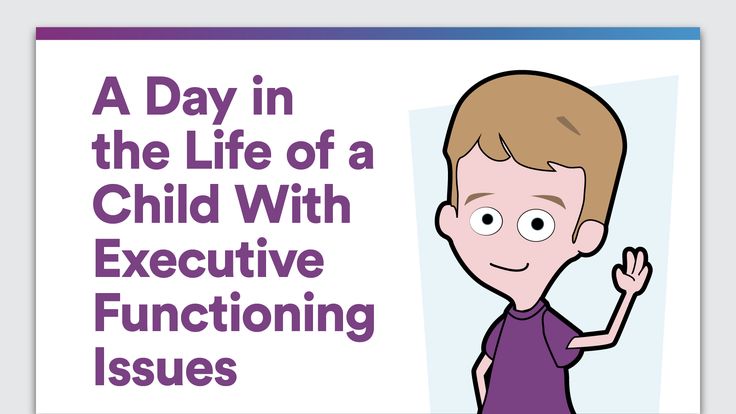 The main thing is that if your child causes any kind of injury to himself, then you need to take precautions to prevent really serious problems. For example, if someone scratches or picks at the skin, then you should always carry plasters with you in case of bleeding. If your child hits his head on something, it's best to choose a soft and safe surface for this (I personally prefer my bed). If your child learns to avoid serious injury, then there is no problem.
The main thing is that if your child causes any kind of injury to himself, then you need to take precautions to prevent really serious problems. For example, if someone scratches or picks at the skin, then you should always carry plasters with you in case of bleeding. If your child hits his head on something, it's best to choose a soft and safe surface for this (I personally prefer my bed). If your child learns to avoid serious injury, then there is no problem.
To stim or not to stim
Now that we've covered the basics of stimming, we're left with the question of whether it's a good idea to keep stimming going. However, this does not mean that you should give up stimming entirely. It's just not a realistic goal, and usually it just makes things worse. A much better approach to stimming is to determine what level of stimming is acceptable in a given situation.
For example, there are certain situations where an unusual appearance is highly undesirable. For example, during job interviews and similar situations where you need to make a good first impression. In these situations it is wise to avoid stimming if possible. It usually takes an hour, no longer, so it's a reasonable goal. If stimming cannot be avoided, then you need to switch to the most inconspicuous stim possible. For example, rubbing your hands together or moving your feet in a boot. Rotating the tongue in the mouth can also be imperceptible, if done correctly.
In these situations it is wise to avoid stimming if possible. It usually takes an hour, no longer, so it's a reasonable goal. If stimming cannot be avoided, then you need to switch to the most inconspicuous stim possible. For example, rubbing your hands together or moving your feet in a boot. Rotating the tongue in the mouth can also be imperceptible, if done correctly.
The next item on the list is public places. When you're at school and sitting in a classroom, going to the store, or just being around people, you need to suppress stimming a little, but not to the same extent as during an interview. First of all, it is important to avoid very noisy stimming or anything that attracts everyone's attention, such as rocking back and forth so much that it distracts people sitting behind. In such situations, moderate types of stimming are preferable. For example, rubbing your hands, wringing your fingers, fidgeting in your chair, rubbing your legs together, curling your fingers back, twisting your hair, or picking your skin a little.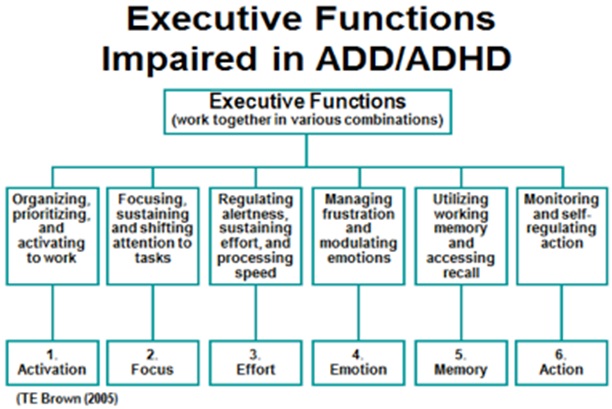 The idea is that stimming does not attract much attention from others. So try to keep quiet and avoid large or too sudden movements.
The idea is that stimming does not attract much attention from others. So try to keep quiet and avoid large or too sudden movements.
Next on the list is stimming in a group of understanding and friendly people. For example, at home with family or among good friends. Under these circumstances, you can relax about stimming and do the most obvious stims, such as rocking back and forth hard, walking back and forth, lowing under your breath, or doing something that would attract unwanted attention in a public place. My favorite stim in this category is walking back and forth. When I'm at home, I do it all the time - it helps to think. At work, I do it too, only there I pretend to go for a drink of water.
The last point is stimming, which is practiced only in solitude. It is mostly done at home when no one is around. If you are alone, then you can do whatever you want. For example, making loud noises, crashing into walls (literally) or bludgeoning things. These most obvious stims can be done with some family members, but since this can be very distracting for them, it is better to go to a separate room. Family members usually don't like loud singing or banging on things while they watch TV.
Family members usually don't like loud singing or banging on things while they watch TV.
Stimming or self-harm
One of the most common misconceptions is that all self-harm in autism is stimming. People can put skin picking into one category, and when a person beats himself at the moment of tantrum. These are completely different things. Self-harm while stimming is completely automatic. When I sit still, I always do something with my hands. If there are no other options, I start picking at the skin. I'm not intentionally trying to hurt myself, I just need to do something with my hands. What people think of when they hear the word "self-harm" is the far more dramatic and dangerous act during a tantrum. Self-harm stims are not related to the desire to harm oneself, but during a tantrum, self-harm is aimed precisely at this goal.
If your child has tantrums that are accompanied by aggression against himself (or others), then you need to help him cope better with stress and prevent tantrums. If you cannot avoid tantrums, then you need to develop a plan of action for this case (for example, take the child to a quiet place without extraneous stimuli). However, this is a problem on a completely different level than just scratching the skin for pleasure.
If you cannot avoid tantrums, then you need to develop a plan of action for this case (for example, take the child to a quiet place without extraneous stimuli). However, this is a problem on a completely different level than just scratching the skin for pleasure.
How can parents help?
Since this book is written for parents who are looking for helpful advice, I decided to include a section on what parents can do to help their child stim more effectively. As I said earlier, stimming is purely an instinctive desire. Thus, trying to completely stop stimming is tantamount to demanding that the person stop eating or sleeping. This does not work. So first of all, parents should learn to understand when their child wants to stim. There is nothing wrong with asking the child to go fast somewhere else if he annoys you. However, if the child is engaged in pleasant stimming when relaxing at home, then this should not be prohibited.
Second, parents can provide opportunities for children to stim more effectively.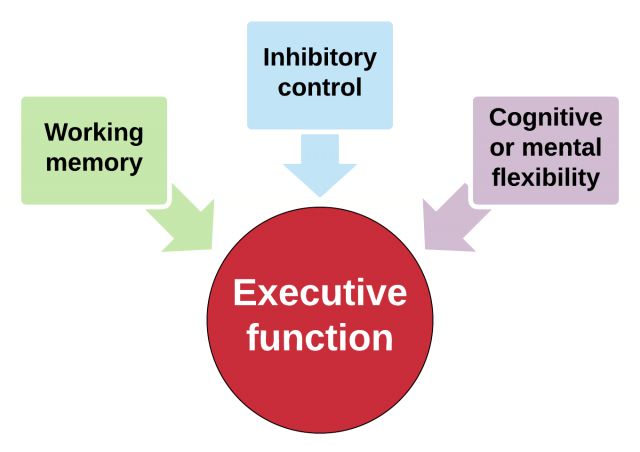 If the child is one of those who like to move a lot, run back and forth and spin in place, then you can help the child channel this energy into a peaceful direction. Mini trampolines are especially popular for this purpose, and most recommend them. Other options are the installation of swings or ladders. In the same way, you can take the child to the park and just let him out on the playground. If your child is a chewer, give him something to chew on. Gum is the obvious solution, as are chewing beads and straws. If you notice that your child is constantly doing something, then you need to find a way to do it in a more efficient, non-destructive and safe way.
If the child is one of those who like to move a lot, run back and forth and spin in place, then you can help the child channel this energy into a peaceful direction. Mini trampolines are especially popular for this purpose, and most recommend them. Other options are the installation of swings or ladders. In the same way, you can take the child to the park and just let him out on the playground. If your child is a chewer, give him something to chew on. Gum is the obvious solution, as are chewing beads and straws. If you notice that your child is constantly doing something, then you need to find a way to do it in a more efficient, non-destructive and safe way.
You can also help your child by purchasing toys for stimming. These are small items that can be played with during the steam mood. Possible options include: leather balls, elastic band, yo-yo, plasticine and so on. More options can be found here: http://www.officeplayground.com/Fidget-Toys-C102.aspx
Which stim toys you choose is up to you and your child. However, they should be consistent with how your child usually stims. If he likes to move a lot, then a swing is better than plasticine. If he likes to rub his hands together, then plasticine is a good idea. And if he does both, then plasticine with a swing is a good combination. If your child is visually stimmed, consider a lava lamp or toys with lights.
However, they should be consistent with how your child usually stims. If he likes to move a lot, then a swing is better than plasticine. If he likes to rub his hands together, then plasticine is a good idea. And if he does both, then plasticine with a swing is a good combination. If your child is visually stimmed, consider a lava lamp or toys with lights.
There is a growing trend to use pressure shirts (shirts that squeeze the body to provide little pressure) and weighted vests for sensory feedback. Personally, I don't have a weighted vest or pressure shirt, so I can't judge their effectiveness, but some people find them very useful. They are often recommended to the same people who are recommended trampolines, so it's reasonable to assume that they are suitable for children who move a lot. If you want to find more information, tips and ideas, then type in the search engine the term "sensory diet". So many other people have already found effective stimming devices that have proven to be very useful.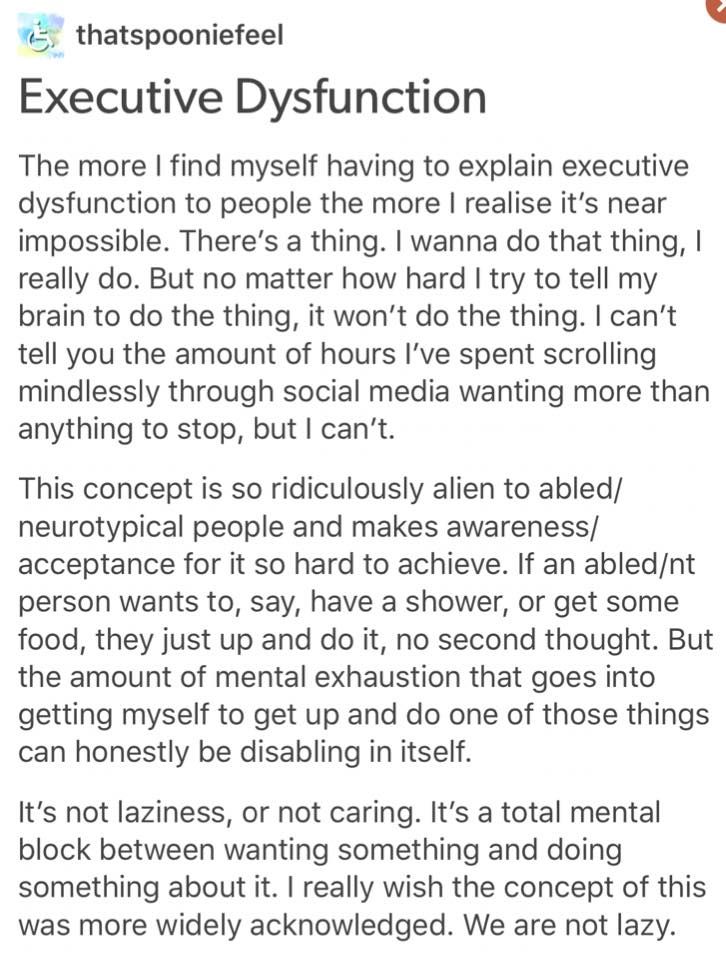
If you decide to order accessories for stimming, then beware of products that are sold at grossly inflated prices. So many people are happy to cash in on panicking parents and put up an insane price for a beautiful name that actually does nothing. For example, a weighted vest or weighted belt can be found at any large sports store for $15. Or you can order "special vestibular sensory weighted vest for the treatment of autism, approved by experts in ABA" for $80. And it will be the same thing, a beautiful name does not make it something else. Similarly, a pressure shirt is sold in sports stores for $15. A "pressure vest for autism treatment" will cost many times more.
If you want to make a swing for a child, then you can simply buy a rope and a board in building materials. These swings will set you back a few dollars, as opposed to "sensor integration treatment swings". My point is that you don't need to buy special equipment just because someone called it "autism treatment".